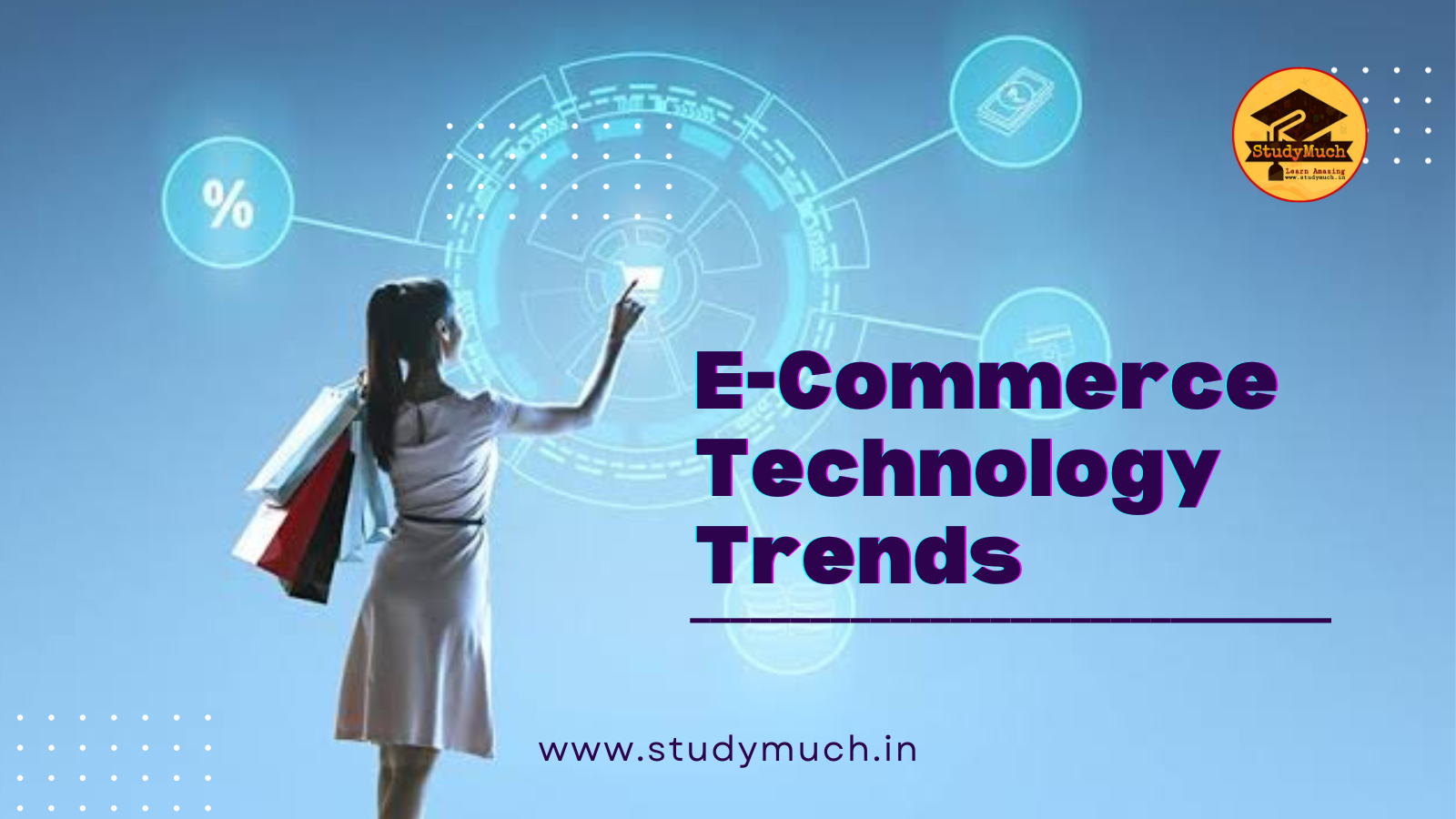E-Commerce Tech Trends

E-Commerce Tech Trends: Personalization, Voice Search, and Beyond
In the fast-paced world of e-commerce, staying ahead of the curve is essential for businesses looking to thrive in the digital marketplace. Technology continues to evolve, and with it, new trends emerge that can significantly impact the way online retailers operate. In this blog post, we’ll explore some of the most promising E-commerce Tech Trends, with a focus on personalization, voice search, and other cutting-edge developments. We’ll also delve into examples and the numerous benefits these trends bring to the table.
1. Personalization: Tailoring the Shopping Experience
Personalization has become a cornerstone of successful e-commerce strategies. By leveraging user data and advanced algorithms, businesses can create tailored shopping experiences that resonate with individual customers. Here’s how:
Examples:
- Recommendation Engines: Amazon’s product recommendation engine is a prime example. It analyzes a customer’s browsing and purchase history to suggest products they’re likely to buy.
- Personalized Emails: Online clothing retailer ASOS sends personalized email recommendations based on a user’s past purchases and browsing behavior.
Benefits:
- Increased Sales: Personalized product recommendations can boost conversion rates by up to 915% (according to Barilliance).
- Enhanced Customer Loyalty: Customers are more likely to return to a platform that understands their preferences.
- Improved User Engagement: Personalization fosters a deeper connection between the brand and the consumer.

2. Voice Search: A Game-Changer for SEO
As voice-enabled devices like smartphones and smart speakers become increasingly popular, voice search is revolutionizing the way consumers find products online. Optimizing your e-commerce site for voice search is crucial for staying competitive.
Examples:
- Google Assistant: Users can inquire about products using voice commands like “Hey Google, find me the best smartphones under $500.”
- Amazon Echo: Shoppers can order products from Amazon by simply asking Alexa to make a purchase.
Benefits:
- Improved SEO: Voice search emphasizes conversational, long-tail keywords, leading to better search engine rankings.
- Enhanced User Experience: Voice search offers a more convenient and hands-free way to shop, particularly for mobile users.
- Competitive Advantage: Early adopters of voice search optimization can gain an edge in their niche.
3. Augmented Reality (AR): Try Before You Buy
Augmented reality has the potential to revolutionize the way customers interact with products in the e-commerce space. By providing virtual try-on experiences, businesses can reduce return rates and enhance customer satisfaction.
Examples:
- IKEA Place App: IKEA’s AR app allows customers to visualize furniture in their own homes before making a purchase.
- Warby Parker: The eyewear brand lets customers virtually try on glasses using their smartphone cameras.
Benefits:
- Reduced Returns: AR try-ons can help customers make more informed choices, reducing the likelihood of returns.
- Increased Confidence: Shoppers feel more confident about their purchases when they can visualize how products will fit into their lives.
- Differentiation: Brands that adopt AR early can stand out from competitors and position themselves as innovators.
4. Chatbots and AI-Powered Customer Support
Chatbots and artificial intelligence (AI) are transforming customer support in e-commerce. These automated systems can provide instant responses to customer inquiries, streamline processes, and improve overall efficiency.
Examples:
- Sephora Virtual Artist: Sephora’s chatbot assists customers in finding the right makeup products by asking questions about their preferences.
- Shopify’s Kit: Kit, an AI marketing assistant, helps online store owners with tasks like running Facebook ad campaigns and sending personalized thank-you emails.
Benefits:
- 24/7 Availability: Chatbots can provide support round the clock, improving customer service.
- Cost-Efficiency: Automation reduces the need for human customer support agents, saving operational costs.
- Data Insights: AI-powered systems can gather and analyze customer data, helping businesses make informed decisions.
5. Blockchain for Transparency and Security
Blockchain technology is making strides in e-commerce by enhancing transparency, security, and trust in online transactions.
Examples:
- Walmart’s Food Traceability Initiative: Walmart uses blockchain to trace the journey of food items from farm to store, ensuring quality and safety.
- Luxury Goods Authentication: Brands like LVMH are exploring blockchain to verify the authenticity of luxury goods.
Benefits:
- Enhanced Security: Blockchain offers robust protection against fraud and data breaches.
- Trust Building: Customers appreciate knowing that their purchases are authentic and that their data is secure.
- Supply Chain Optimization: Blockchain can streamline supply chain processes, reducing costs and increasing efficiency.
Conclusion;
E-commerce is a dynamic and ever-evolving field, and staying ahead of the competition requires a keen eye on emerging tech trends. By embracing personalization, optimizing for voice search, incorporating AR experiences, leveraging chatbots and AI, and exploring blockchain applications, e-commerce businesses can create a more engaging, efficient, and secure shopping environment for their customers while gaining a competitive edge in the market. So, in this post you have learn about the E-Commerce Tech Trends, I hope you have understood this better.
Learn More:


0 Comments